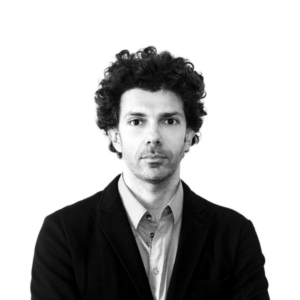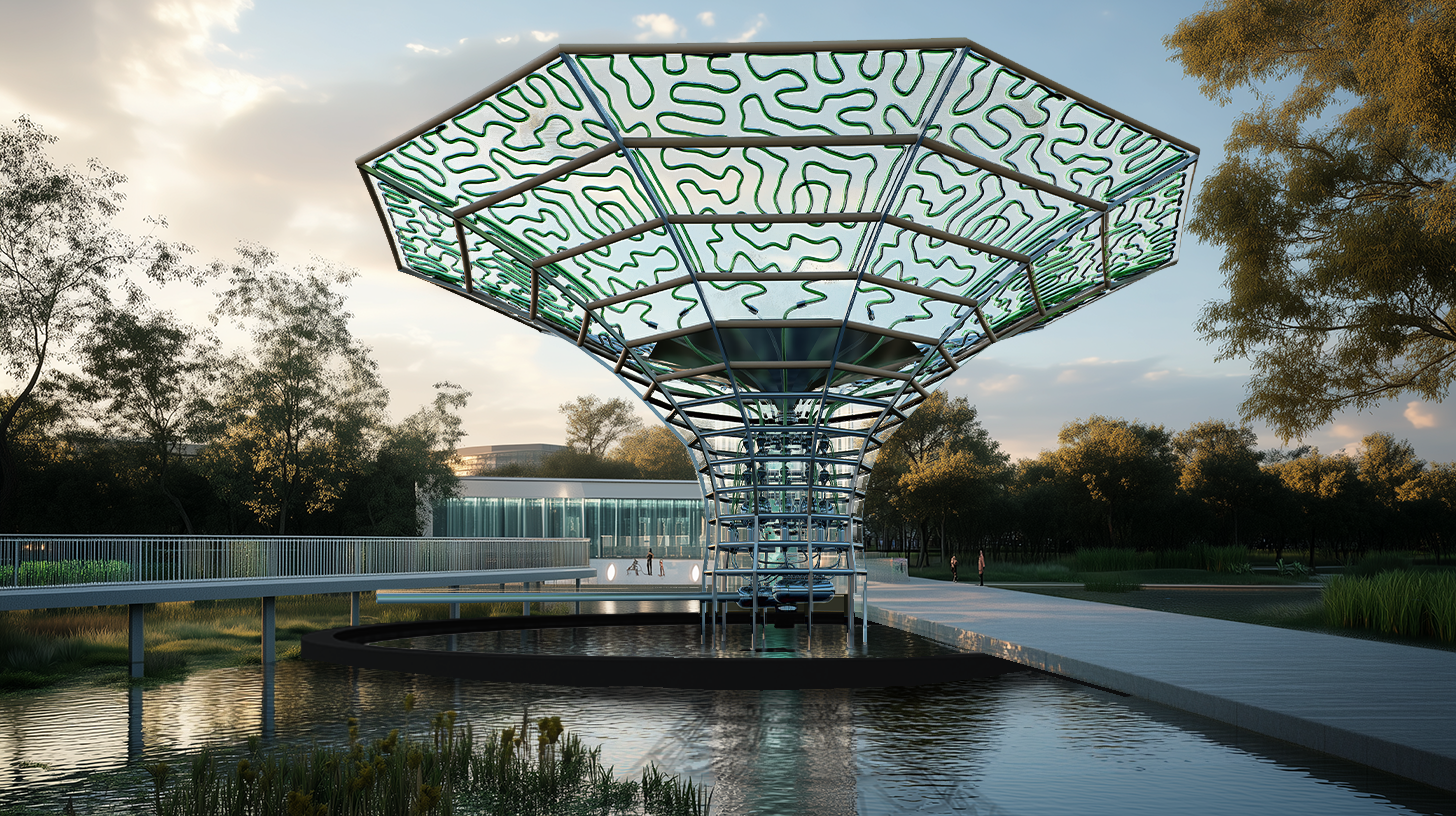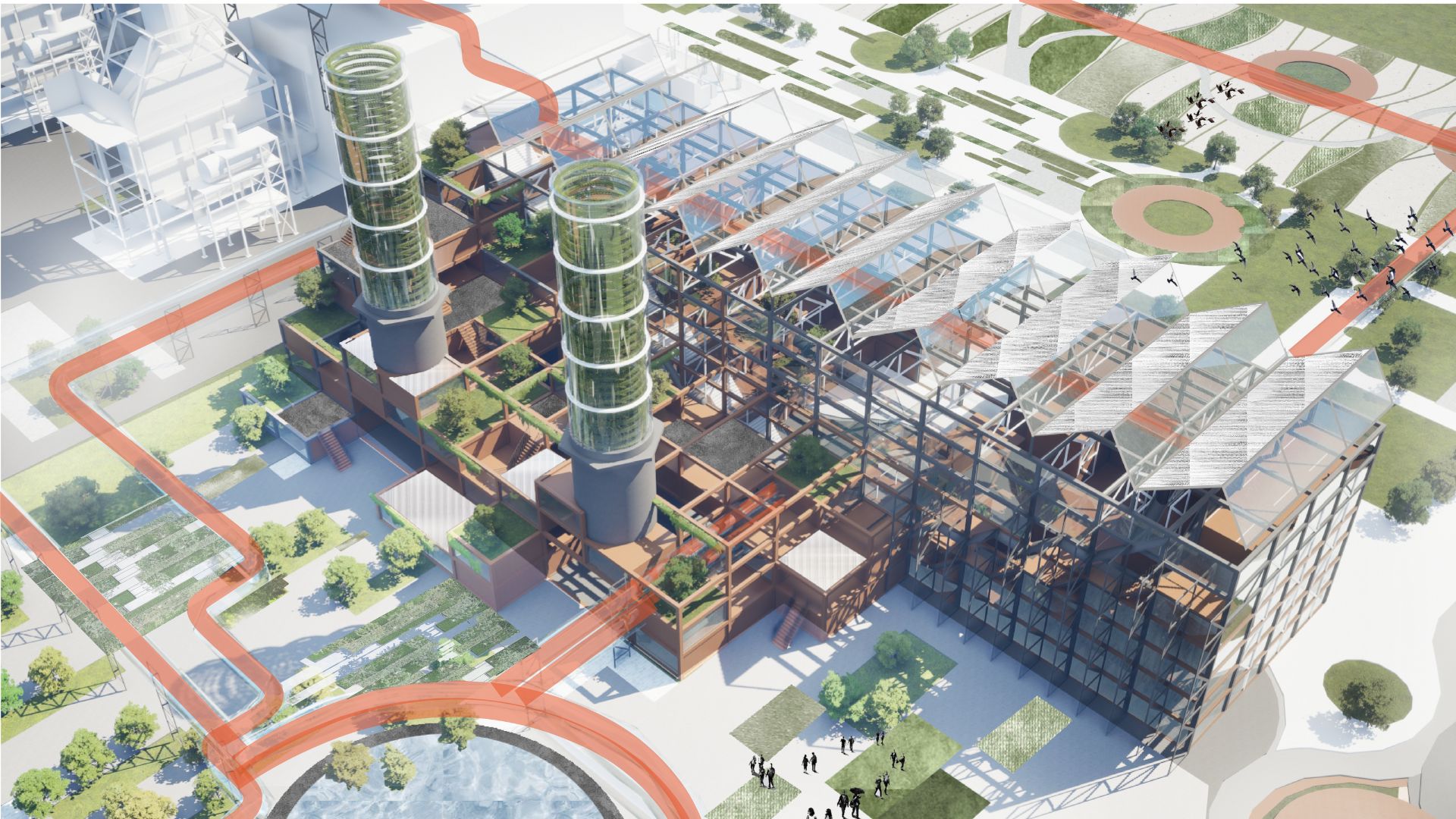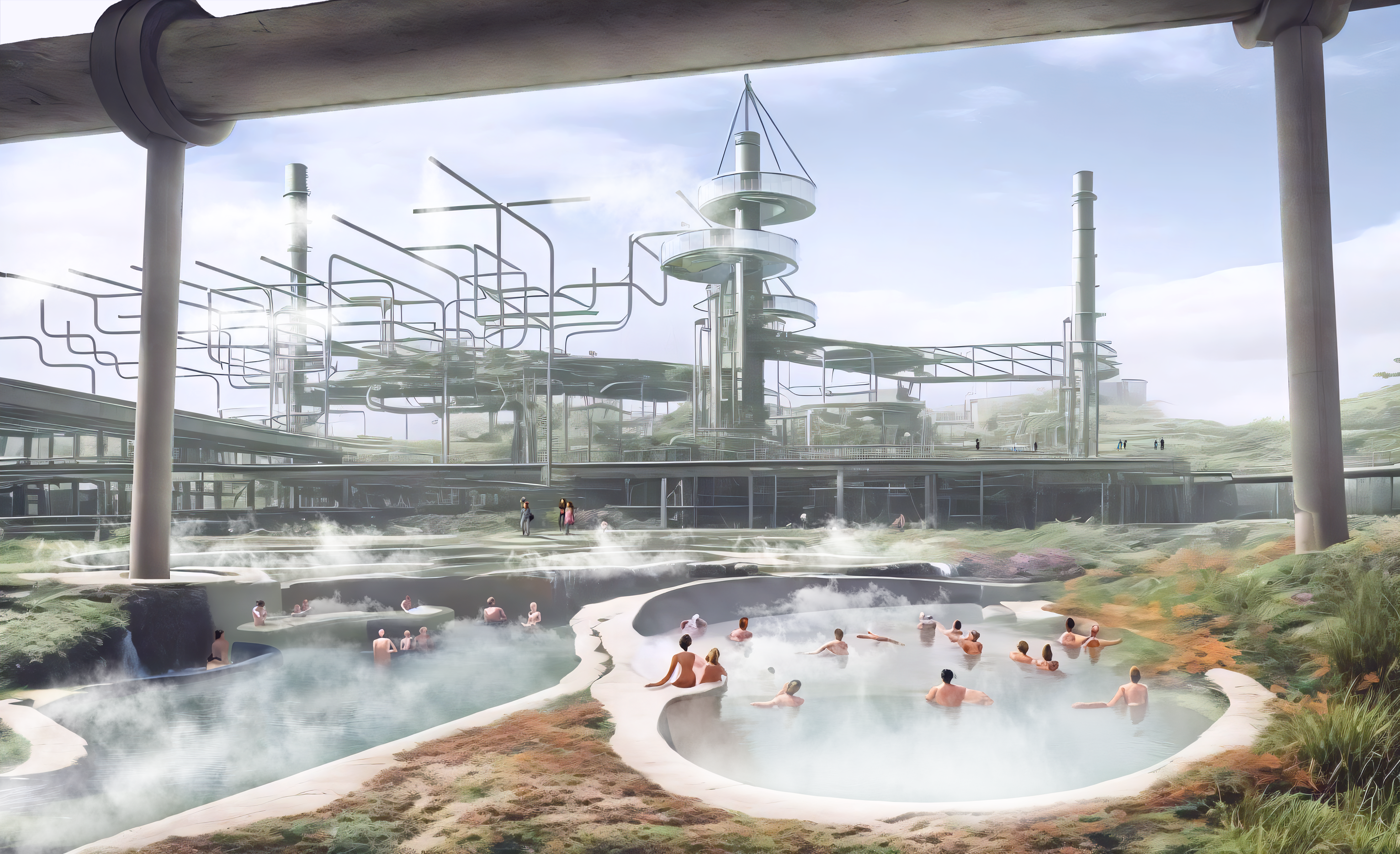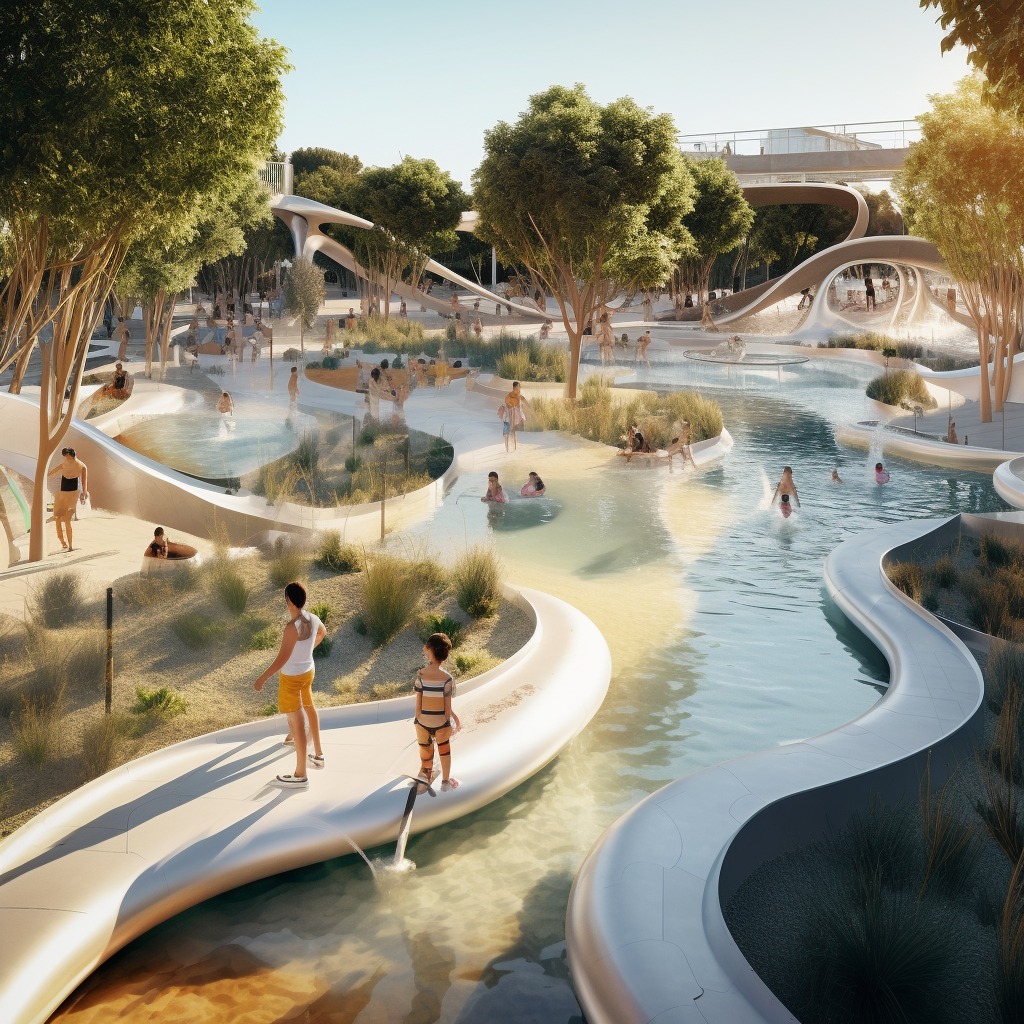
Credits: Food Playground, Introductory Studio G3, MAA01 22/23
With humanity edging closer to a world where traditional infrastructure—such as oil refineries, coal power plants, and more—are being phased out, there exists an imperative to rethink, repurpose, and reimagine these dormant giants. The questions arise: How can we repurpose these spaces? What new life can be breathed into them, ensuring they are economically viable, ecologically sustainable, and beneficial for communities?
In this studio, students will navigate these queries, drawing from a confluence of contemporary thought leaders across disciplines. With a critical exploration into how artificial intelligence reshapes architectural praxis, this course emphasises the collaborative dance between human and machine, pushing the boundaries of traditional design workflows.
Beyond the mere physical, the transformative potential of spaces requires understanding and tapping into broader systems. Embracing Indy Johar’s systemic design philosophies, students will be encouraged to delve deep, recognizing that challenges are interconnected and demand holistic solutions. It’s not just about the space but the socio-economic, ecological, and cultural ecosystems they are part of. At the heart of repurposing old infrastructures lies the imperative of sustainability, both ecological and economic. Drawing from principles of the Blue Economy by Gunther Pauli, designs will not merely be about reuse but regenerative impact. Imagine spaces that not only minimise waste but become cradles of new ecosystems, both natural and human-centred. Yet, as we forge forward into this realm of reimagining, we remain conscious of the inherent unpredictability of systems. Guided by Nassim Taleb’s insights, students will design with antifragility in mind, creating spaces that are not just resilient but thrive amid disorder through non-centralized networks and distributions.
The built environment’s contribution to global CO2 emissions can’t be overlooked. Paradoxically, as the earth receives an immense amount of energy from the sun every minute, our challenge is harnessing it efficiently and harmoniously. Rather than seeing human-made structures as disconnected from nature, the curriculum strives to blur these boundaries. Nature’s balance is imperative. The consequences of imbalance have catastrophic implications for humanity, and therein lies our challenge – harmonising human activities with nature.
Revisiting the architectural milestones, the twentieth century lauded the architecture as a ‘machine for living’. Yet, in the twenty-first century, the emphasis shifts towards resource intelligence, understanding the intersection of economy, ecology, and ethical responsibilities. Such a reconceptualization of architectural excellence needs to prioritise sustainability, ecology, and environmental consciousness.
Embarking on this journey, we embrace AI not as a futuristic notion but as an embedded facet of present-day design thinking. As we navigate the landscape of repurposing infrastructures, we leverage AI-driven methodologies. The confluence of generative AI tools and human creativity creates a space for co-creation.
Through the lens of renowned thinkers like Michael Wooldridge and Max Tegmark, we recognize the importance of interweaving artificial intelligence into our architectural undertakings. Wooldridge’s assertion of the tremendous potential (and challenges) of AI combined with Tegmark’s speculation on the evolution of life provides a robust academic underpinning for our inquiry.
AI is not in the future; it’s the present, deeply woven into the fabric of design thinking. As we explore the avenues of repurposing infrastructures, leveraging AI-driven workflows becomes imperative. The combination of generative AIs like Midjourney and DALL·E with LLMs, such as ChatGPT, enables a symbiotic relationship where machines and humans co-create.
Our journey won’t stop at conceptual stages. The speculative concepts birthed from AI and human collaboration will metamorphose into tangible projects through the implementation of parametric design strategies. This iterative, feedback-driven process is not just about creating aesthetically pleasing structures, an easy trap to fall into while using generative AI models, but also functional spaces that echo with the principles of economic viability and ecological responsibility.
It’s paramount to acknowledge that this evolution isn’t about AI replacing the human touch but augmenting it. And herein lies the paradigm shift. In a world where the line between the digital and tangible blurs, our role as architects is not to delineate but to merge, to create spaces that are not just habitable but adaptive, not just structures but narratives of a sustainable future.
Embarking on this journey, we embrace AI not as a futuristic notion but as an embedded facet of present-day design thinking. As we navigate the landscape of repurposing infrastructures, we leverage AI-driven methodologies. The confluence of generative AI tools and human creativity creates a space for co-creation. To truly fathom this future, we must embrace the interconnectedness of systems, both digital and tangible. Let us embark on this transformative journey, reimagining spaces, challenging conventions, and co-creating a future that resonates with both technological advancements and inherent human creativity.
Learning Objectives
The overarching aim of this course is to tackle how the future of ageing and obsolete infrastructure will be reimagined, redesigned, and revitalised, leveraging state-of-the-art tools and technologies including artificial intelligence.
Students will explore the topic of evolution in the design and repurposing of abandoned infrastructural spaces to respond dynamically to a range of social, economic, and environmental needs. They will critically examine the implications of AI-driven workflows in architectural design and planning.
The course will challenge students to deploy innovative methods of reconfiguration and redesign, using adaptable design elements that can shift functionally over time and place. Students will engage in hands-on projects using generative AI platforms like Midjourney and DALL·E to co-create with machine intelligence.
Learners will delve into pioneering techniques and materials that reduce environmental impact and enhance sustainability. These may include systemic design approaches, principles from the Blue Economy, and antifragile design strategies.
Students will transition from conceptual stages to implement parametric design strategies, transforming their speculative AI-human collaborative concepts into functional, economically viable, and ecologically responsible projects.
Recognizing that AI augments rather than replaces human creativity, students will investigate the paradigm shift towards a symbiotic relationship between AI and human design thinking. They will create adaptive spaces and sustainable narratives, rather than merely habitable structures.
In summary, students will reimagine obsolete infrastructure, integrating novel technologies, materials, spatial organisations, and design philosophies that navigate the complex interplay between humanity, ecology, and technology. They will foster a nuanced understanding of the connections between built spaces, community, society, and broader ecosystems, while emphasising the importance of co-creation and system interconnectedness.


